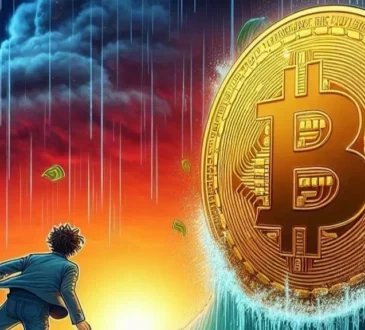A global player as a financial messaging network: SWIFT
More than 11,000 banks and financial institutions rely on the SWIFT messaging network for financial transactions. In 2022, the SWIFT network registered an impressive average of 44.8 million messages daily, facilitating $150 trillion in transactions annually.
As of May 2024, the
breakdown of traffic transmitted by SWIFT indicates that the dollar accounted for 59.42% by value, followed by the Euro at 13.09%, the British pound at 5.0%, the Japanese yen at 5.07%, and the Chinese Renminbi at 3.12%.
It’s crucial to note that SWIFT doesn’t physically move money. Instead, it functions as a messaging system enabling banks to transmit payment instructions, using standardised codes and formats such as ISO20022, to financial institutions worldwide.
Cross-border SWIFT payments typically engage multiple banks within the network, undergoing a verification process such as beneficiary account number, sanction list screening, and more, before reaching their destinations.
Consequently, a cross-border payment through SWIFT may take an average of a few days to reach the beneficiary. The involvement of intermediary banks called correspondent banks extends the duration and adds to the cost, making it a relatively expensive financial
instrument for consumers.
SWIFT has improved its GPI instant initiative to overcome the frictions in current payments and securities processing. This initiative revamps cross-border infrastructure, empowering financial institutions to execute instant and seamless end-to-end transactions
by linking domestic real-time payment systems.
Despite SWIFT’s status as the predominant global bank connectivity option and the reliance of many regional financial market infrastructures on the SWIFT network, such as the East African Payment System (EAPS) and the Regional Payment and Settlement System
(REPSS) operated by COMESA, it faces competition from other regional or global payment systems and networks by leveraging new technologies such as DLT or existing ones such as APIs.
Co-opetition with China’s CIPS
In 2015, China launched the
Cross-Border Interbank Payments System (CIPS) to promote the use of RMB currency for international trade settlement. The system provides clearing and settlement services connecting onshore and offshore clearing markets and participating banks.
As of October 2023, CIPS has 1481,119 as direct participants and 1362 as indirect participants. According to the Centre for Strategic and International Studies, the daily volume of CIPS averages about 385 billion yuan (USD 45.6 billion). Although CIPS wasn’t
designed initially to replace SWIFT, as it is not only a payment network but also a clearing & settlement system, China is fostering cross-border use of the RMB and building a RMB-based interbank payments system that can serve as a contingency to remedy possible
financial sanctions if it happens.
The RMB, which could become the denomination for additional cross-border transactions if payment transactions transit to CIPS over time, represents just 3.06% of transactions as of July 2023 supported by SWIFT.
Although China seems concerned about using Western payment infrastructures, it leverages the SWIFT network for cross-border transactions, foreign bank branches, and subsidiaries. It uses SWIFT-compatible messages for high-value global RMB transactions.
SWIFT signed a memorandum of understanding (MOU) with China International Payment Service (CIPS) in 2016 for a strategic collaboration to develop China’s CIPS using SWIFT as a channel to connect CIPS with SWIFT participants to extend the reach of internationalisation.
In response to collaboration, SWIFT extended the to support Chinese characters in addition to Latin characters in payment transactions. Also, SWIFT established a support unit in China to provide services in the local language. As noted by SWIFT, 1,700 financial
institutions have made RMB transactions using the Swift network. Swift has operated in China for over 30 years, and nearly 400 Chinese financial institutions and corporations are connected to Swift today.
In light of the above, the co-opetition between two payment systems is supported by the following facts:
- China is the largest exporter to the US and ranks second in terms of FDI inflow. So, the impact of any disruption in the flow of money into China will be crucial even for the Western world;
- Indirect participants to CIPS utilise the SWIFT network to send and receive instructions to the participant’s CIPS. While the direct participants remain undisclosed, notable international banks are listed on
Wikipedia as indirect participants; - Conversely, the US counterpart to CIPS, CHIPS (The Clearing House Interbank Payments System ), participates in four Chinese banks’ high-value payment systems.
CIPS rail growth and attractiveness are apparent. It requires additional ingredients to make the currency attractive in co-opetition from both economic politics and monetary policy points of view.
Russia’s SPFS payment system
Russia’s System for Transfer of Financial Messages (SFPS) was built in 2014 to process payment transactions in UFEBS (Unified Formats of Electronic Banking Messages) and MT formats comparable to SWIFT’s messaging formats.
The network consists of roughly 400 members. This is mainly because most international banks refused to join the SPFS for political reasons, such as fearing Western sanctions. The
Russian Central Bank said that, at the end of September 2023, SPFS consisted of 550 organisations from 16 countries.
On March 17, 2022, Anatoly Aksakov, Chairman of the State Duma Committee on the Financial Market, revealed that the Bank of Russia and the People’s Bank of China are collaborating on linking the Russian and Chinese financial messaging systems.
Additionally, he noted the initiation of developing a transfer mechanism using blockchain technology, including the digital ruble and the digital yuan. Subsequently, on March 31, 2022, the Economic Times of India reported that the Indian government proposed
a new integration with Russia, suggesting a shift towards using the ruble and SPFS for trade transactions. This system would operate through the Reserve Bank of India and Russia’s Vnesheconombank.
By January 30, 2023,
Iran had fully integrated with SPFS to bolster trade and financial operations, aiming to circumvent stringent economic sanctions on their financial infrastructure.
The ambition of SPFS to become a global payment rail is evident. However, it remains confined to a coalition of countries driven by similar political motives, notably Western sanctions, such as Russia, Iran, Belarus, Kazakhstan, and Kyrgyzstan.
Emerging DLT-based payment networks
Cryptocurrencies for cross-border payments have gained significant traction recently, although businesses’ adoption of cryptocurrencies has been relatively slow. The growth was mainly driven by the cost-effectiveness of crypto-enabled fintech platforms that
convert fiat currencies and cryptocurrencies.
One of the critical advantages of blockchain is the ability to have an atomic settlement in which assets and payments are exchanged simultaneously, the so-called DvP (delivery versus payment), it presents a viable alternative to SWIFT as it provides a messaging
platform for settlement agents but does not simultaneous.
However, there are drawbacks associated with using cryptocurrencies in cross-border space. One major limitation is the low adoption rate in the business landscape; only a few e-commerce businesses currently accept cryptocurrencies as payment options.
Additionally, the volatility in the value of cryptocurrencies is considered another challenge for users. Furthermore, the unregulated cryptocurrency market may expose users to vulnerabilities such as fraudulent activities.
Private and public sector players such as Ripple, Bitcoin, and R3 have initiatives to create new DLT-based payment infrastructures and protocols. For example, RippleNet was designed to provide an alternative to the SWIFT network through the XRPL and XRP.
The company uses XRPL technology to enhance cross-border payments, liquidity and central bank digital currencies.
According to the
Ripple whitepaper, the network offers 3 to 5-second settlements and can handle around
1,500 transactions per second. Ripple is positioned as a blockchain-based payment network that can be considered an alternative to SWIFT and a native cryptocurrency on the network facilitating settlement. In this context, it offers more than SWIFT currently
does.
Another alternative to a public blockchain network is Bitcoin, which processes its native token as cryptocurrency. Unlike traditional fiat currencies, Bitcoin runs on a peer-to-peer network and is not supervised by any government or central institution.
One of the main differentiators of Bitcoin is its scarcity. Unlike fiat currencies, which can be printed to increase circulation, there will only be a maximum of 21 million bitcoins in the market.
You may think that Bitcoin has the potential to become a reserve currency due to its scarcity, which prevents inflation and devaluation issues. However, for Bitcoin or any other cryptocurrency to become a global reserve currency, it must overcome challenges
such as volatility, regulation, and scalability issues. This volatility can prevent governments and institutions from looking for a stable store of value for their foreign exchange reserve.
Additionally, since Bitcoin is decentralised, there is a standardised mechanism to prevent fraud or money laundering. The anonymous nature of cryptocurrencies, ease of cross-border transactions, and decentralised architecture make it a choice for laundering
money.
Finally, Bitcoin’s scalability is another concern as the current capacity of the Bitcoin blockchain can only process around ten transactions per second, far less than traditional payment systems, which can process thousands of transactions per second. As
more people begin to use the network, the number of transactions that can be processed per second is limited. This could become a challenge if Bitcoin were considered a global reserve currency, as it would need to be able to handle a large volume of transactions.
Bottomline
The reserves are used to settle the trade and payment transactions; therefore, there seems to be a correlation between reserve and payment currencies. A simple partial analysis of the correlation between the payment and reserve currency shares confirms a
strong and positive correlation, as seen in the graph below.

Source: Digital Money, Cross-Border Payments, International Reserves, and the Global Financial Safety Net: Preliminary Considerations ( Authors: Seunghwan Kim, Alex Miksjuk, Narayan SuryakumarAnita Tuladha, Delia Velculesc, Yiqun W, Jimena Zuniga, and
Nick Hallmark.)
The most widely used reserve currency is currently the US dollar, which is used in international trade. Other reserve currencies include the Euro, the Japanese yen, and the Chinese yuan.
According to a Bank for International Settlements report, the US dollar remains the dominant reserve currency in an estimated 88% of the world’s trade. In the meantime, there is a trend of de-dollarisation
in certain countries, such as Russia and China, as they are pushing to support trade between the countries by using their local currencies, such as paying for gas with rubles.
The expansion of the payment systems of these countries, such as CIPS and SPFS, is a contributor to the trend but a long way to reach a critical level if the currency is still not fully convertible.

As you may see in the graph, there is a slight decrease in the use of the US dollar and Euro as a reserve currency, but they still hold a strong position against the others. As long as the USD and Euro remain strong, SWIFT is expected to maintain its dominant
position as a financial messaging network for at least EUR- or USD-originating payments.
The paradigm may shift in line with the growth of digital currencies in cross-border space, provided that the settlement mechanism will dramatically change by using DLT-based technologies. In that context, it would not be surprising to see more progress
on wholesale CBDC initiatives rather than the domestic level of retail use cases, as the CBDCs will promote the use of digital currencies in cross-border trade to empower its position from being a reserve currency point of view.




